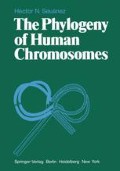Abstract
Classically, taxonomists relied on anatomical characteristics of living beings or of extinct fossils for assigning organisms to taxons, so that the classification indicated a hierarchical order of macro-structural complexity. For pre-evolutionary taxonomists, the main task of systematics was (1) to classify, (2) to name, and (3) to indicate degrees of resemblance between organisms. After the theory of evolution was put forward, systematics rapidly became on evolutionary science whose most important aim was to show relationships by descent. Simpson (1944) championed this latter approach to systematics, and moreover, used this classification to estimate the rate of structural evolution of organisms during phylogeny. A good example provided by the lineage of the horse (genus Equus) which has undergone eight successive genera in roughly 45 million years. This works out a approximately 0.18 genera per 106 years, a standard evolutionary rate of organic change which Simpson called “horotelic”. There was also a second approach to the study of organic evolution, based on quantitative characteristics, e.g., brain size, which, as we have previously stated, has increased in the human lineage by a factor of approximately 3 in about 5 million years.
Access this chapter
Tax calculation will be finalised at checkout
Purchases are for personal use only
Preview
Unable to display preview. Download preview PDF.
References
Dayhoff, M.O. (ed.): Atlas of protein sequences and structure; National Biochemical Research Foundation. Vol. 5. Washington D.C.: Georgetown University Medical Center 1972
Goodman, M.: Protein sequence and immunological specificity. Their role in phylogenetic studies of the primates. In: Phylogeny of the primates. Luckett, W.P., Szalay, J. S. (eds.), pp. 219–248. New York: Plenum Press 1975
King, M.C., Wilson, A.S.: Evolution at two levels in human and chimpanzees. Science 188, 107–116 (1975)
Kohne, D.E., Chiscon, J.A., Hoyer, B.H.: Evolution of primate DNA sequences. J. Hum. Evol. 1, 627–644 (1972)
Ohno, S.: An argument for the genetic simplicity of man and other mammals. J. Hum. Evol. 1, 651–662 (1972)
Pearson, P. L.: The uniqueness of the human karyotype. In: Chromosome identification techniques and applications in biology and medicine. Caspersson, T., Zech, L. (eds.), pp. 145–151. New York, London: Academic Press 1973
Simpson, G.G.: Tempo and mode in evolution. New York: Columbia University Press 1944
Simpson, G.G.: The principles of classification and classification of the mammals. Bull. Am. Mus. Nat. Hist. 85, 1–350 (1945)
Simpson, G.G.: In: Classification and human evolution. Washburn, S.L. (ed.). Chicago: Aldine 1963
Author information
Authors and Affiliations
Rights and permissions
Copyright information
© 1979 Springer-Verlag Berlin Heidelberg
About this chapter
Cite this chapter
Seuánez, H.N. (1979). Man and His Classification. In: The Phylogeny of Human Chromosomes. Springer, Berlin, Heidelberg. https://doi.org/10.1007/978-3-642-67260-6_3
Download citation
DOI: https://doi.org/10.1007/978-3-642-67260-6_3
Publisher Name: Springer, Berlin, Heidelberg
Print ISBN: 978-3-540-09303-9
Online ISBN: 978-3-642-67260-6
eBook Packages: Springer Book Archive

